It is time, yet again, to replace my water heater’s sacrificial anode. My purpose here is to bring to your awareness the importance of changing the anode to substantially prolong the life of your water heater. This is not a “how to” and if you are unsure of your skills you should call a professional.
Rust Protection
For decades, the sacrificial anode has been a key part of the rust protection of a tank. The anode is a rod made of magnesium or aluminum that’s formed around a steel core wire and is screwed into the top of the tank. When the tank is filled with water, an electrolytic process begins whereby the sacrificial anode is consumed to protect a small amount of the tank’s exposed steel. Anodes corrode more quickly in softened water.
When the anode is removed, if you can see six inches of the steel core wire, replace the rod. If all you have is the steel core wire, or less, then the tank may be about to fail, or it could last several more years. There are two kinds of anodes, combo and hex-head. The hex-head has its own port that you can see in my photographs, the combo is found in the hot water port.
I always replace my anodes with magnesium rather than aluminum. Aluminum produces less driving current between anode and cathode (the tank is the cathode). It produces many times its original volume in corrosion byproduct which adds to sediment and can also clog filters. Aluminum rods expand as they corrode making them hard to remove. And lastly some of that aluminum can get into the cold water and do nasty things to your liver, brain, and kidneys.
For more information, see The Basics: Anodes and Longevity. These are the people I buy my anodes from if I cannot obtain them locally.
Preparation
I read about sacrificial anodes just before my first water heater rusted through and had to be replaced. I removed the anode from the old tank and found all that was left of the rod was the steel core. By changing the sacrificial anode at least every five years, the new tank has now outlasted the old tank.
To make replacing the anode a little easier, when I bought my new tank I made sure it came with an hex-head anode. Before obtaining a replacement anode, I measured the distance from the top of the tank to the ceiling. That will be the maximum length of anode you can install. In my case I had 48 inches of clearance — just right.
Removal
Paul replaced the old anode with Megan photographing the steps.
Paul turned off the water to the house and then opened the temperature relief valve on the tank. He didn’t turn off the natural gas supply to the water heater, although in the past I have done so when I have changed the anode.
A large adjustable wrench was used to loosen the hex-head anode. It came out easily though sometimes they really do need a hefty wrench.
The old anode was removed. We had enough room between the top of the tank and the ceiling to remove the anode. However, if there was not sufficient space, the used rod will easily bend.
On inspection, you can see that the anode does indeed need replacing. Four years ago this was a .84 inch thick 4 foot long solid magnesium hex-head anode.
Installation
Installing the new sacrificial anode is simple enough.
The new rod came with a roll of tape that is wound around the anode to make removal easier. The tape does not seem to hinder the essential electrolytic process that consumes the rod and thus protecting your tank.
Clean Up
Paul closed the temperature relief valve and turned the water back on.
It is very important to record the installation date. My previous kit came with a sticker to place on my tank. The first replacement was done five years after installation of the water heater, in February of 2002. The next replacement was 31 Oct 2007 and the latest was done less than five years later 5 March 2011. I also made an entry in Google Calendar which I set up to email me in four years to remind me to change the anode.
Notice that the sticker has a “Tank flushed/vacuumed” reminder. Flushing your tank will also prolong its life. I have flushed my tank once and it is overdue for another flush. However, that is a post for another day.
One final reminder. By replacing the anode you can substantially increase the life of your water heater. Spending $45 every five years will defer for some time the price of a new heater (around $500), plus the cost of installation if you pay someone to do it. Not to mention the inconvenience of suddenly being without hot water or cleaning up a leaking tank.
Out of curiosity, how many readers already knew about replacing the anode?
Videos
.
.

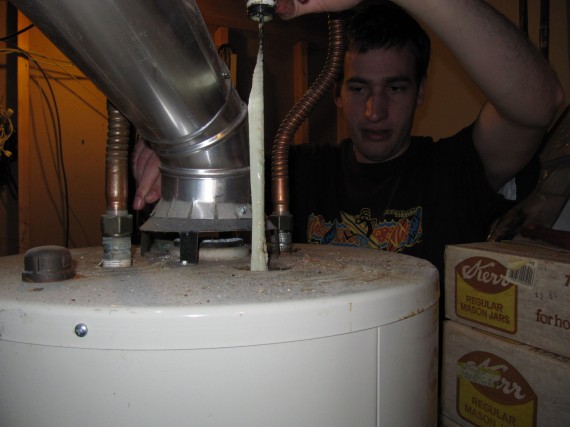
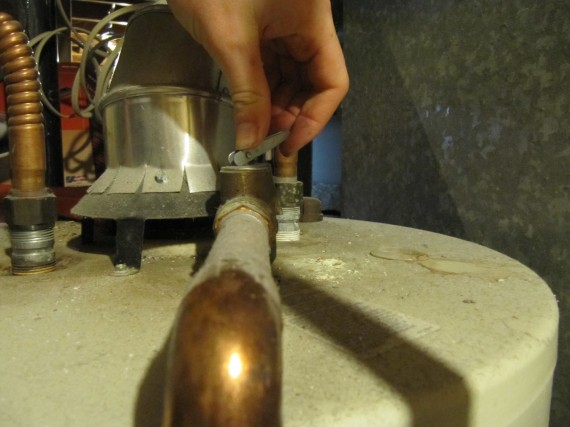
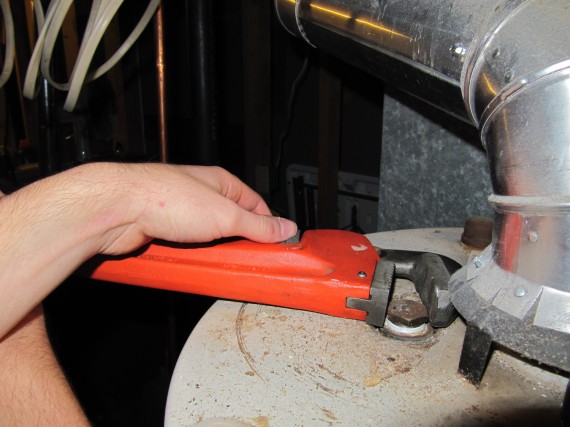
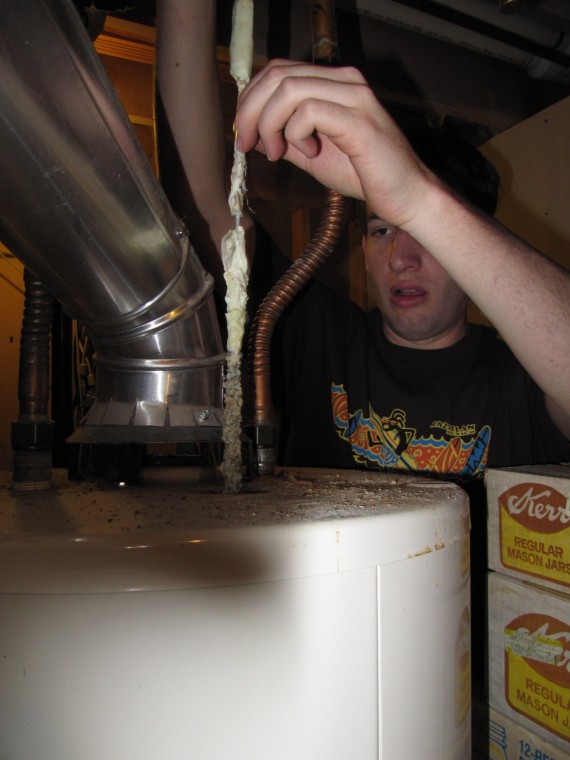
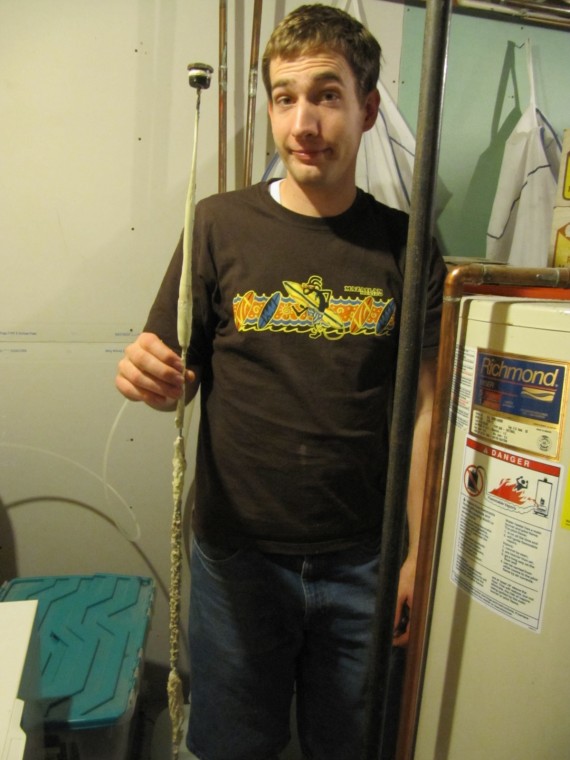
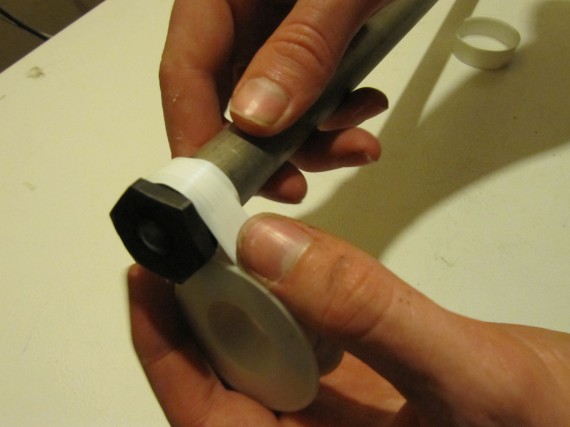
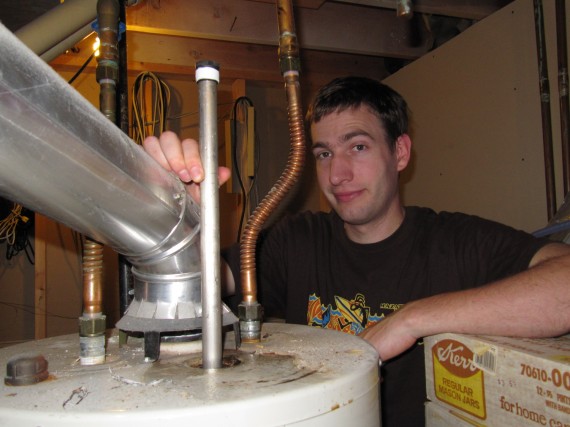

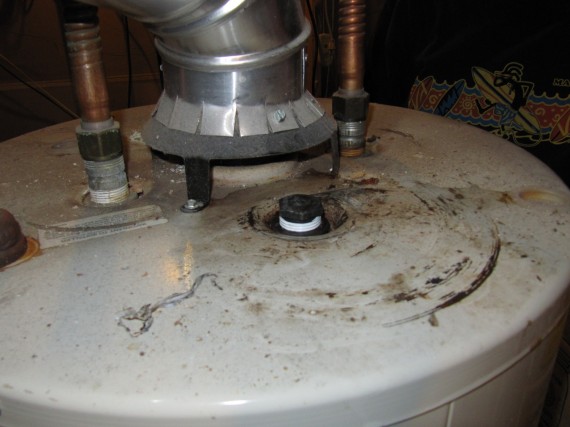
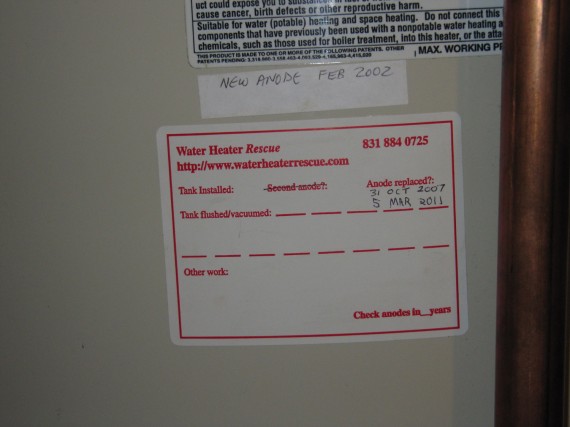
I was on here reading other posts and saw your great article. In a round about way replacing your sacrificial anode is a great example of a very good investment/insurance, etc. It’s one of the easier home maintenance items yet so many hot water heaters are junked every year just because of this anode. Shorter versions of these, made of zinc or aluminum, are also used in the hulls of yachts. It’s the same game of fending off corrosion. Neglecting those can be a doozy as well.
Nice job on the article and photos!
I just learned about the sacrificial anode today, then I found your article after additional research. I tried to remove mine with a breaker bar but the only thing that moved was the water heater! I’ll try the impact wrench next. I’ve owned the house for almost two years – I think the heater is about 9 years old. It may be too late but I’ll give it a shot (I hope I don’t break it!).
When I replace the water heater I’ll be doing this regularly.
I am always surprised at how many people do not know about the sacrificial anode. It is like driving a car and not knowing that the oil needs changing regularly.
There appears to be a debate as to the need for replacement. Some say that during the first two years the anode has sacrificed the metal to the tiny areas that need it adequately. Once those areas are covered they are protected forever. The anode is needed due to imperfections in the manufacturing process. Other say replace every 5-10 years. They support that by the continued erosion of the rod appearance. So far I have yet to see proof that replace causes more than anecdotal evidence.
I replace my anode every 4 to 5 years. Each time the anode is well on its way to extinction. But as you say, it is only anode-dotal evidence.
Sacrificial or Galvanic anodes are used in more places than water heaters and lend to their credibility. Most items manufactured for use in the weather, or for dealing with water or other corrosive materials, are electroplated or coated. While an anode may help to cover up imperfections in the original coating, corrosion will continue leading to the need to recoat those areas. Cars usually have sacrificial plates placed throughout their body which is why they don’t rust right off the bat (especially in Utah with all the salt through the wintertime).
In industry, where I spent most of my working life, we did that regularly. It is the rare homeowner that will ever think of it, however in areas with particulary acidic water, water heater failure may be common enough that anode replacement awareness gets into the culture. :)
Years ago my wife brought home from the library a book about house repairs. As I browsed through it I saw a section on water heaters. It said if you change the anode and drain the tank on a regular schedule, your tank will last many many years.
So far that has turned out to be true.
This happened years ago, so I do not recall all the details, but I once had a service call where the home owner was not getting much hot water. So, I checked both elements, and the thermostats and they seemed fine, so then I got out a current meter and found the heater to be drawing about what it should.
So, I was standing in a Hardware store thinking about the issue, and one of the sales folk related to me that it could be what he called, “the down tube”, apparently a tube that carries the cold water all the way to the bottom of the tank, thus preventing the mixing of the hot and cold water in the top. He also sold me a new anode.
So, it was not that difficult to change both, though one of the fittings was so rusted in that I thought I might rip the mating fitting out of the tank. It was all a great surprise to me. In short order, the tank was jolly well functioning as it was supposed to.
Just recently, I found out that the owner of the Hardware store is LDS. It seems as if the LDS were inescapable in my life. LOL
LDS in your life is good for you.
Yes, you are of course correct. In my case, they saved my life. :)
I see you’re wrapping your Teflon tape the wrong direction. ;)
Thanks for the how-to! Only problem was it’s taken me an inconveniently long time to source a replacement anode for my heater… You’d swear some of the companies deliberately make it so that you want to give up and just buy a brand new boiler!
The “roll of tape” you refered to is teflon tape and its for sealing the threads to help keep that junction from leaking.
So, the roomies have been complaining about not having enough hot water, and I have been contemplating checking the elements and thermostats. Hmmmm If that doesn’t take care of it, then because of this reminder email I got today, I will remember to check the anode. :)
Thank you.
There is a question wether to place the rod the a Magnesium or Zinc rod. Any thoughts on what is the better solution?
Magnesium
Great information! I’ve been a previous homeowner 4 times over and never knew this maintenance work was necessary to prolong the life of your water tank. Thank you for sharing.